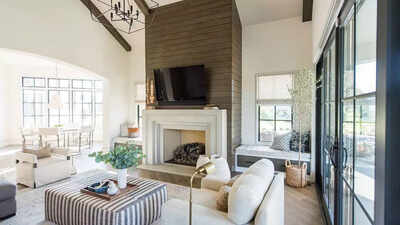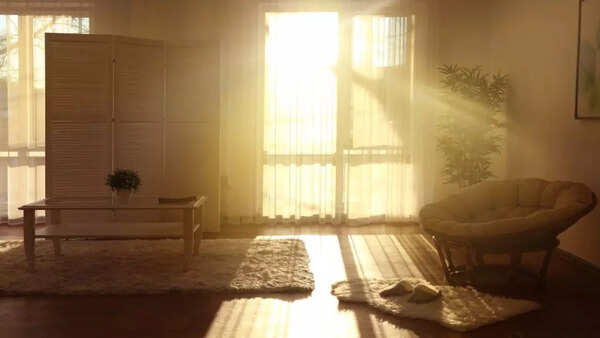
If your home feels cramped or lacks openness, you don't necessarily need to renovate or move. With thoughtful design strategies, even the smallest space can feel expansive, light-filled, and welcoming.
Here are five expert-approved tips to make your home appear larger, brighter, and more functional—using lighting, colour, furniture, and layout tweaks.
How to maximise small spaces with interior design tricks

Use natural and artificial lighting to make a small space look bigger
One of the most effective ways to make a small space look bigger is to prioritise natural light. Whether it’s through large windows, glass walls, or sheer curtains, letting daylight flow into your home helps visually open up a room. Sunlight not only enhances mood but also creates the illusion of more space.To maximise light distribution, incorporate reflective surfaces like mirrors, high-gloss finishes, and polished furniture. These materials help bounce light around the room, adding both depth and dimension. In spaces where natural light is limited—such as windowless bathrooms or narrow corridors—layer in smart ambient and accent lighting. A well-balanced lighting scheme with ceiling lights, wall sconces, and table lamps can eliminate shadows and make the room feel open and airy.
Choose a light, cohesive colour scheme for spacious-looking interiors
Colour plays a pivotal role in transforming how spacious a room feels. Opt for a cohesive colour scheme using soft neutrals, pastel tones, and complementary hues to visually enlarge your interiors. Off-whites, greys, beiges, and muted greens or blues create a calming flow, making small areas feel more expansive.To avoid visual clutter, paint walls, ceilings, and trims in the same or similar tones, eliminating harsh lines and divisions.
This seamless transition allows the eye to move freely across the space. Introduce pops of bold or contrasting colour through decor accessories like cushions, rugs, or wall art to add personality without overwhelming the room.
Pick space-saving, multifunctional furniture for small rooms
In compact homes, space-saving furniture is a game-changer. Choose pieces that serve more than one purpose, such as ottomans with built-in storage, nesting tables, sofa beds, or foldable dining sets.
These not only reduce clutter but also allow flexibility in how the space is used.Minimalist furniture designs with exposed legs or open bases make the floor area appear larger and less obstructed. Transparent materials like acrylic and glass are excellent choices, as they allow light and sightlines to pass through, reducing visual weight. Custom-built storage units and integrated cabinetry can also streamline the look of a room while keeping things organised and out of sight.
Create visual zones without using walls or physical dividers
Instead of using walls to divide your home into sections—which can make it feel more confined—use zoning techniques that maintain flow and openness. Different flooring materials, area rugs, or a pendant light over a dining table can help define functional areas like the living, dining, or workspace, without erecting solid barriers.Invest in hidden storage solutions such as built-in drawers or under-sofa compartments to maintain tidy surfaces.
Stick to the ‘less is more’ philosophy by decluttering regularly and choosing only meaningful, well-designed decor pieces.
Maximise vertical space to add height and openness
When floor space is tight, look up. Designing vertically draws the eye upward, which adds visual height and creates a more spacious feel. Floor-to-ceiling curtains, tall shelving units, vertical paneling, and wall-mounted artworks give the illusion of increased room height.Other tricks include floating vanities, wall-mounted lighting, and vertically striped wall features such as fluted panels or groove detailing.
These not only create structure but also encourage upward visual movement, making even low-ceiling rooms feel grander.You don’t need a bigger home to enjoy a sense of spaciousness—just smarter design. By playing with light, colour, vertical design, and multifunctional furniture, you can transform tight rooms into open, breathable sanctuaries. Whether you’re revamping a studio apartment or upgrading a small bedroom, these interior design tips can make your home look and feel much larger.Also Read: 10 common mistakes that can kill your plants

 6 hours ago
45
6 hours ago
45




























 English (US)
English (US)